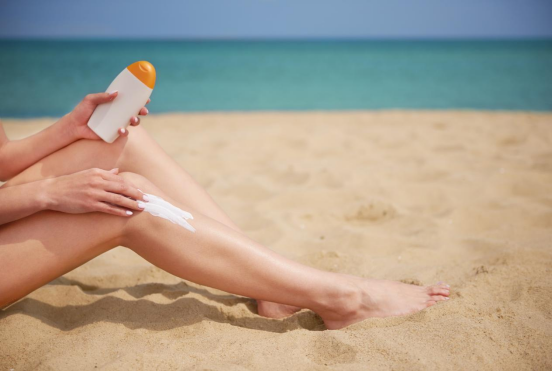
As consumers end up being increasingly wise concerning skin care, the debate in between chemical and physical sunscreens continues to be a warm topic. While both deal crucial security against the sunlight's damaging ultraviolet (UV) rays, physical sunscreens are typically lauded for their gentle yet effective formulation, making them a recommended option for those with delicate or responsive skin. The key to their success depends on their energetic ingredients, which develop a physical obstacle on the skin to block out UV radiation. This post will explore the globe of physical sunscreens, focusing on their vital components: zinc oxide and titanium dioxide.
Unlike their chemical counterparts, which absorb UV radiation and transform it right into heat, physical sun blocks work by sitting on top of the skin to form a guard that deflects and scatters both UVA and UVB rays. This device is why they are usually described as "sunblocks." The key advantage of this technique is its prompt performance upon application and the reduced chance of triggering skin inflammation, as the ingredients are not taken in right into the skin.
The most popular active ingredient in the physical sun block family members is Zinc Oxide. This giant mineral is unique in its ability to supply broad-spectrum defense, meaning it properly secures the skin versus the full spectrum of UVA and UVB rays. UVA rays are in charge of premature aging, consisting of creases and great lines, while UVB rays are the primary cause of sunburn. By offering detailed protection against both, zinc oxide plays a critical function in preventing sunlight damages and minimizing the threat of skin cancer cells.
Furthermore, zinc oxide is renowned for its soothing properties. It has actually been used for centuries physical sunscreen ingredients to treat minor skin irritations, rashes, and burns, a testament to its gentle nature. This makes sunscreens created with zinc oxide an optimal choice for individuals with sensitive skin, acne-prone skin, or conditions like rosacea and eczema. Its non-comedogenic residential properties likewise mean it is much less likely to block pores, a common problem for those with oily or combination skin.
The other principal in the physical sun block classification is Titanium Dioxide. This naturally taking place mineral is another superb active ingredient for producing a physical barrier against UV rays. It is extremely efficient at showing and scattering UVB radiation, giving robust protection against sunburn. While it supplies excellent defense across the UVB range, it is typically considered much less reliable against long-wave UVA rays contrasted to zinc oxide.
Consequently, titanium dioxide is often made use of together with zinc oxide in sun block formulas. This combination develops a synergistic impact, boosting the overall broad-spectrum protection of the product. By leveraging the toughness of both ingredients, formulators can produce a sunscreen that offers detailed and trustworthy protection versus the sunlight's destructive rays. Like zinc oxide, titanium dioxide is likewise mild on the skin and is a suitable option for those with sensitive or conveniently irritated skin.
Recently, innovations in solution innovation have actually addressed one of the first disadvantages of physical sunscreens: the thick, white cast they would frequently leave on the skin. Modern formulations now make use of pulverized or nano-sized bits of zinc oxide and titanium dioxide, which allows for a much more cosmetically stylish application without jeopardizing their safety abilities. This implies you can take pleasure in the mild, reliable security of a physical sun block without the tell-tale white residue.
In conclusion, physical sun blocks offer a dependable and gentle method to secure your skin from the sun. Their star ingredients, zinc oxide and titanium dioxide, work in harmony to create a physical shield that disperses unsafe UVA and UVB rays. With their superb safety account and viability for all skin types, particularly sensitive skin, physical sun blocks are a powerful force in the fight against sunlight damage. The following time you are Surf the sunscreen aisle, consider the effective, safety, and skin-loving benefits of a physical formulation.